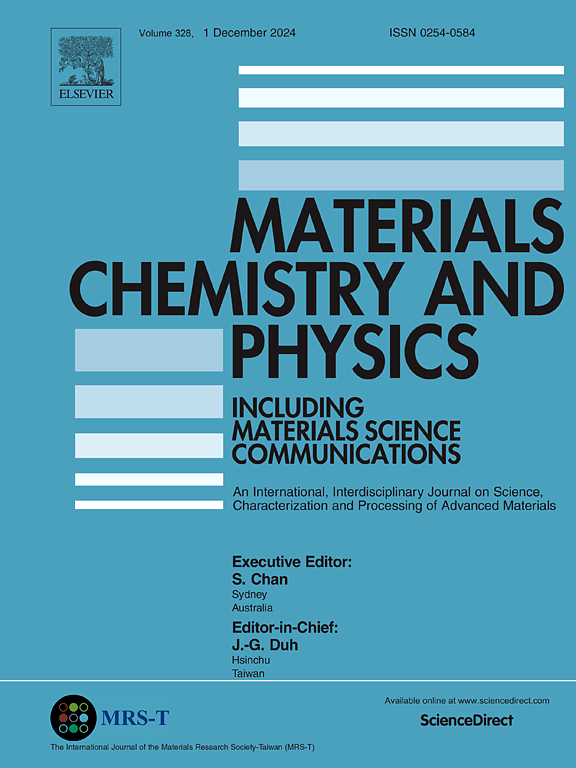受限 MoS2 单层纳米通道内 NaCl 溶液的异常介电特性
IF 4.3
3区 材料科学
Q2 MATERIALS SCIENCE, MULTIDISCIPLINARY
引用次数: 0
摘要
我们通过分子动力学模拟系统地研究了不同浓度的氯化钠溶液在不同类型的 MoS2 纳米通道中的介电行为。这组全面的模拟旨在深刻揭示空间尺寸、结构配置和电解质溶液浓度对介电性能的影响。本文的研究结果表明,在 MoS2 封闭系统中,水溶液和氯化钠溶液在封闭相中的介电常数表现出各向异性。值得注意的是,随着 NaCl 溶液浓度的增加,这些封闭环境中的轴向介电常数会降低,而径向介电常数则会增加,呈现出非单调趋势,NaCl 溶液的临界点分别为 0.4 摩尔/升和 0.6 摩尔/升。这种反常的介电行为可归因于水分子在较低浓度下的重新定向,其目的是在封闭系统中保留原有的氢键网络,这导致偶极子波动增强,径向介电常数异常增加。本文章由计算机程序翻译,如有差异,请以英文原文为准。

Unusual dielectric properties of NaCl solutions within confined MoS2 monolayer nanochannels
The dielectric behavior of NaCl solutions at varying concentrations within different types of MoS2 nanochannels has been systematically investigated through molecular dynamics simulations. This comprehensive set of simulations aims to provide profound insights into the interplay among spatial dimensions, structural configurations, and electrolyte solution concentration on dielectric properties. The findings presented in this paper reveal that the dielectric constant of both aqueous and NaCl solutions in confined phases exhibits anisotropic behavior within MoS2 confinement systems. Notably, as the concentration of NaCl solution increases, the axial dielectric constant in these confined environments decreases, while the radial dielectric constant experiences an increase, demonstrating a non-monotonic trend with critical points observed at 0.4 mol/L and 0.6 mol/L for NaCl solutions. This anomalous dielectric behavior can be attributed to the reorientation of water molecules at lower concentrations aimed at preserving the original hydrogen bonding network within the confined system, which leads to enhanced dipole fluctuations and an unusual increase in radial dielectric constants.
求助全文
通过发布文献求助,成功后即可免费获取论文全文。
去求助
来源期刊

Materials Chemistry and Physics
工程技术-材料科学:综合
CiteScore
8.70
自引率
4.30%
发文量
1515
审稿时长
69 days
期刊介绍:
Materials Chemistry and Physics is devoted to short communications, full-length research papers and feature articles on interrelationships among structure, properties, processing and performance of materials. The Editors welcome manuscripts on thin films, surface and interface science, materials degradation and reliability, metallurgy, semiconductors and optoelectronic materials, fine ceramics, magnetics, superconductors, specialty polymers, nano-materials and composite materials.
 求助内容:
求助内容: 应助结果提醒方式:
应助结果提醒方式:


